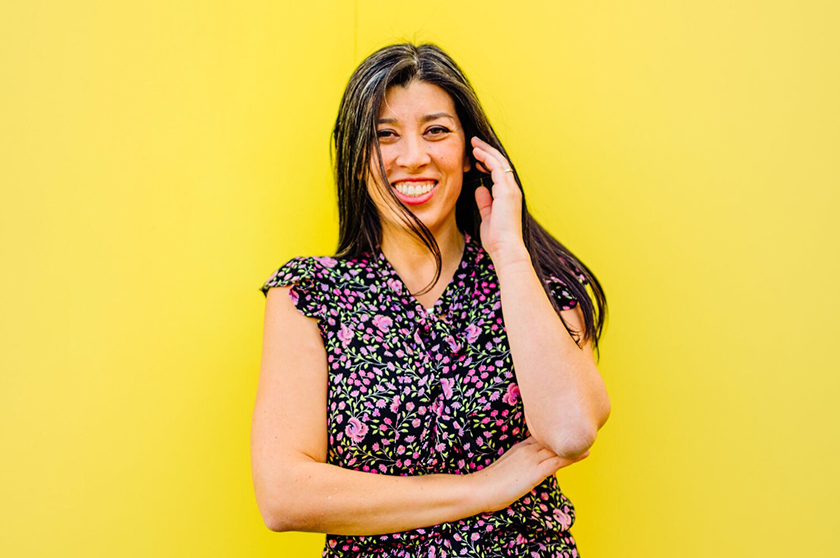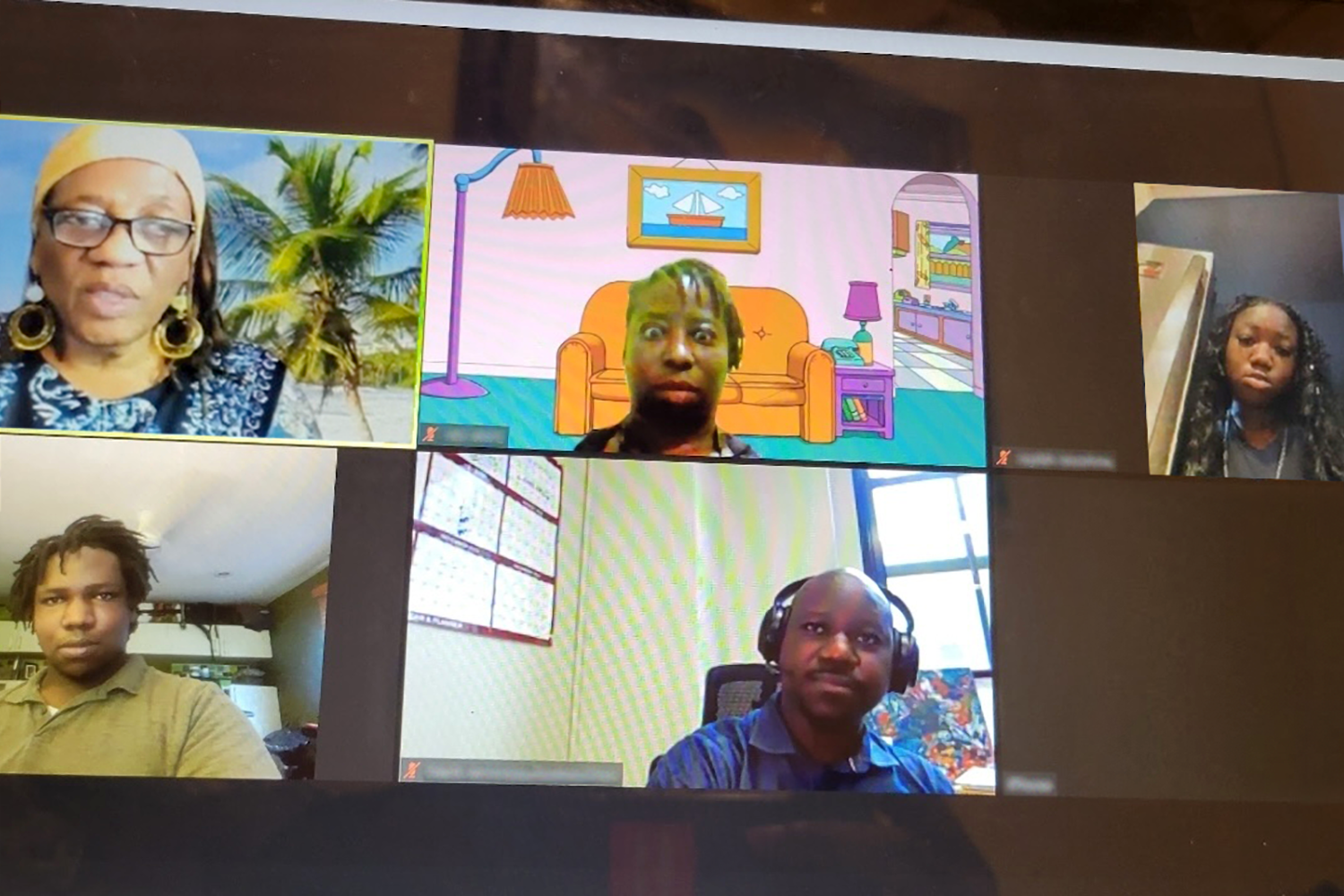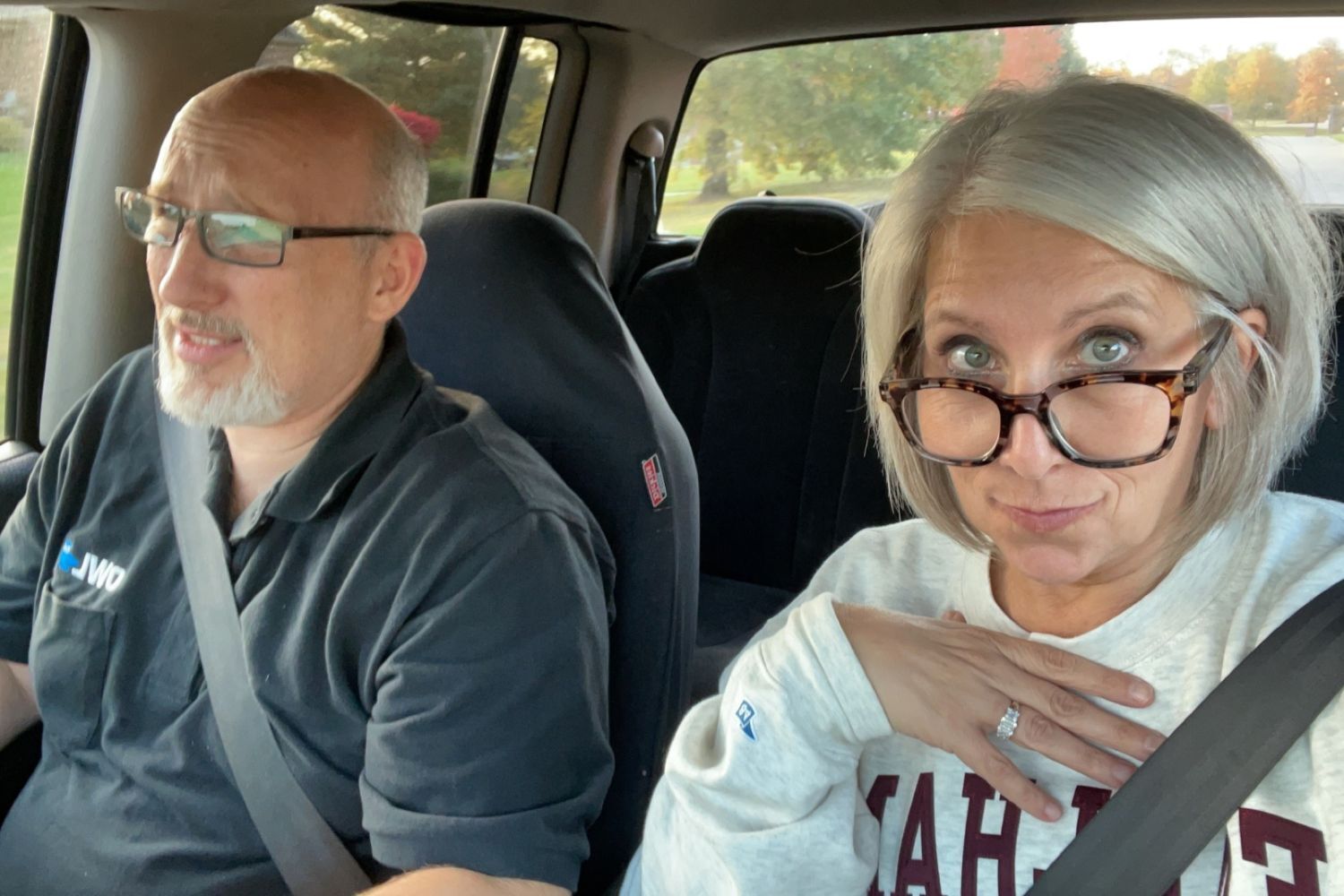
Marissa Huber shows how to live life your way, with ‘time chunking’
Sometimes frustration is the best medicine for change — at least, that was the case for Marissa Huber. In 2015, at 38, the artist got so annoyed with people saying she’d have no time for herself once she became a parent that she “unintentionally built a community of creatives” to talk about it.
That accidental community has blossomed into Carve Out Time for Art, which Marissa runs with Heather Kirtland, a fellow creative she met on Instagram. In April, they published The Motherhood of Art, a beautiful book featuring interviews with 32 creative mothers, including Sonal Nathwani, A’Driane Nieves, Deborah Velasquez, and Amy Tangerine.

About Marissa Huber
Now 41, Marissa is a painter and designer whose work has been featured in HGTV, Design Love Fest, the Create! Magazine podcast, and more. In the last two years, Marissa also learned surface pattern design and began licensing patterns, completed several 100-day projects, played Legos a ton, had incredible conversations with her dad in his final months of life, and had her second child. “I also ate a lot of drive-thru and laughed more than I cried,” she writes from her home in Ft. Lauderdale, Florida.
Believe it or not, Marissa also has a full-time day job. Pre-pandemic, Marissa drove 10 hours per week to her job as a senior occupancy planner for JLL, and though she’s now working from home, she’s still the sole earner for her family.
How does Marissa do so much? Her “secret” is chunking out her time. That, and having a supportive partner who’s the primary caretaker of their kids on weekdays. “When I used to get frustrated by the things I wanted to accomplish, and felt I had no time, I started making the most out of 15-20–minute chunks. Over and over again,” she says.
As a busy working parent with side hustles, Marissa says it’s nearly impossible to find, say, four-hour stretches of focus time, consistently and steadfastly. “After some time, you’ll be amazed at what those small chunks add up to.”
Nothing inspires Marissa more than connecting with other women who can make some time in their daily or weekly lives to pursue their dreams and interests, big and small. “I’m an artist who gained confidence, focus, and efficiency in my art making after my son was born, and it went against what everyone was telling me as a new mom,” Marissa says.

What’s it like to work full time from home during the pandemic?
Being a mom who’s used to taking advantage of whatever time I have to efficiently complete work has been critical during shelter in place.
My main professional focus is ensuring all client deliverables are met and that my managers know I’m available if something unexpected comes up. As an occupancy planner who’s supporting social distancing planning, work is busy, and it feels good to be able to help in some way. I’m grateful to have my job, and be able to work remotely.
What’s your childcare situation?
Since 2015, my husband, Mike East, has been the stay-at-home parent in our household. He’s a fine artist who’s been using late nights to get his painting done outside of being the primary caregiver to our two children. I want to note that with our first child, we lived in Philadelphia and both worked full time — he was a college art professor — and our son was in daycare. I was the primary caregiver / flex-parent, and that has been a major shift in our family.
In “normal” times, I commuted one hour each way, Monday through Friday, to my onsite office. Before the pandemic, I would get home around 7 p.m. each night. Although I was used to the schedule, there are many times when I felt like I was missing everything. Right now, I’m working full time from home, and it’s nice to see my kids so much, cook dinner more, and go take a walk during lunchtime, which I never found time to do on weekdays previously.
I feel privileged that we’re able to live on my income due to changes in our life, including moving in with my parents temporarily, and then as a permanent solution after my Dad passed away. Though it’s been an adjustment for all, I’m glad to be here for my mom, and see how much joy she gets out of seeing the kids daily.
There was a learning curve at the beginning of shelter in place while my son, who’s 7, was doing virtual school with my husband, I was working and also keeping an eye on our toddler, who’s one and a half. We strategized to make sure I had uninterrupted time for heads-down work or a virtual meeting, and I took advantage of work I could do with distractions.
There were times when I would follow around my toddler with my laptop and coffee and continue to plug along on presentations while she ran around in the hallway, played in the living room, or while I supervised bath time splashing.
Some days are better than others, and we’re all just doing our best right now. I’m giving myself a lot of grace, and making sure the kids get some snuggle time and playtime with mom. Even 15 minutes goes a long way, like Shonda Rhimes mentions in Year of Yes.


How many hours do you usually sleep?
Ha! Totally depends. Anywhere from six–nine hours? Not totally uninterrupted since my daughter still fusses occasionally and sleeps in our room.
I usually get seven hours of sleep, but sometimes stay up late to work on personal projects. I’m more of a night owl than an early riser, and I like the quiet time to myself for my work. Since it’s generally work that energizes me, it doesn’t feel like a sacrifice — granted, this isn’t all the time.
I was really interested to hear — from Dax Shephard’s podcast, Armchair Expert — about biphasic sleep, where humans used to have two sleep cycles. When my daughter was very little, there was a period where I kept falling asleep putting her to bed early, then waking up for her 3 a.m. feeding and feeling wide awake. I kind of love that quiet time and used it for personal projects like digital art, my book editing, or watching TV shows. It made it a positive time for myself versus feeling anxious postpartum.
We don’t have the strictest schedule, and shelter in place and work / side gig demands have really turned everything around. We’re trying to find a new schedule that works for us.

We realize you’re only 41, but what are the 40s like for you so far, and what do you want younger women to know about this decade before they reach 40?
I love my 40s so far. I know myself and what truly matters, I value my worth, and am more comfortable in my skin now than in my 20s and 30s. I want younger women to know that we cannot control the passage of time. But you can start doing work at whatever age to inch toward the woman you want to become, and the big dreams you want to accomplish someday.
“I want younger women to know that we cannot control the passage of time. But you can start doing work at whatever age to inch toward the woman you want to become, and the big dreams you want to accomplish someday.”
Also, enjoy every age, so when you look back, you can smile at how you’ve grown, laugh at your badass rejections, failures, and mistakes, and feel like you gave all of those years justice. It all leads us to our unique paths.

Top takeaways from ‘The Motherhood of Art‘
- There’s not one way to live life, but it is YOURS to live the way that you want that works for YOU.
Every person, situation, and family is different. I believe you have to figure out what works for you, and be flexible in knowing that there are phases to everything, so you’ll have to adapt along the way.
- Start where you are.
It’s easy to see a glossy version of life on Instagram or the result of someone’s 10-year journey and measure yourself up to that. It makes people think there’s no point to start, but that isn’t true.
Anyone can decide to do anything, but we all must start somewhere. Is it committing to learning how to paint with watercolors? Is it committing to doing research around anti-racism? Is it a new workout routine? Take the first step. Then the next step. And then the path will slowly start unfolding when you’re ready — just follow the breadcrumbs.
- Everyone is creative! Creativity is why we are human.
Creativity is figuring out how to keep your kids safe, entertained, and quiet while you have a video conference call in front of a non-messy part of your home during COVID. It can be figuring out a meal with what you have in your pantry that your family wants to eat. Maybe it’s rearranging your home so that an awkward area feels like a sanctuary during a stressful day. Or figuring out how to keep in touch with your loved ones when you can’t see them.
- You can make a lot of progress, over time, in 15-minute increments.
My late father was a financial adviser, and I call this “creative compound interest” like you get with your retirement plan.
I focused on projects that supported that, and shifted (e.g., knitting, embroidery, reading more books, learning a new skill, art projects you can pick up and put down easily). People ask me how I’ve done the things I’m able to do, and that’s the secret.
What three jumbles are top of mind for you?
1. Fighting racism.
As I write this in June 2020, a deep reflection around anti-racism is top of mind — and what more I need to do in my personal, professional capacity, and as a community leader for Carve Out Time for Art.
I’ve been taking with friends of all races, and thinking of how I, as a multi-racial woman — Filipino and Caucasian — can be a bridge-builder and more actively anti-racist moving forward.
I feel grateful to have grown up feeling “other” — while completely acknowledging my own white privilege — and in a diverse area where I’ve had access to many worldviews, which have impacted my own. We’re continuing conversations with our friends, family, children, helping to amplify work people are already doing, donating where we can, and I’m doing research with friends to stay accountable to learning and action.
2. I think about how shelter in place is affecting my 7-year-old son.
It’s been hard for him and his classmates, but they seem to be getting used to it. I’m talking with parents in his class to see how we can help them interact and stay in touch.
3. Pausing after our finishing our book to figure out my next steps.
I took several months to think about where I want to be focusing my energy for art and community moving forward. In March 2020, we presented at Altitude Summit in Palm Springs with many plans for a book tour, collaborations with companies and schools, and speaking events (all understandably canceled). Several weeks later the world changed, and three months later, it’s a complete acceptance and even feels frivolous.
How do you go with the flow? Meaning, how do you work through your jumbles?
My beautiful, talented, and compassionate late brother was an addict. Losing him when I was 27 put so many things into perspective. Everyone has their own struggles, and most people are doing the best that they can. I also saw that the most generous and beautiful moments can exist in the same place as the rawness of grief. Such is the duality of life — and this resilience and perspective helps me to accept things, do better, and keep showing up.
“My beautiful, talented, and compassionate late brother was an addict. Losing him when I was 27 put so many things into perspective.”
—Marissa Huber
Also, after attending plenty of NA meetings to support my brother, the Serenity Prayer is pretty damn good (coming from a non-religious person). “God, grant me the serenity to accept the things I cannot change, courage to change the things I can, and wisdom to know the difference.”
My self-care is a five-minute cry, laughing with others, taking a walk, and finding a lesson in everything eventually. If I get overwhelmed, remembering my own mortality is sometimes helpful and grounding. Did I do my best? Are my intentions good? Am I showing up for people and being a good role model for my kids? Did I learn a lesson that I can share? Did I apologize or help a friend? How can I do better next time? Then do it.
What have you figured out by now, and what do you hope to figure out moving forward?
I’ve figured out that nobody is going to give me permission to do the things I want to do except for me. So I better get on it. I’ve also realized that nobody has everything figured out completely, and many people I look up to are winging it as they go, too. Do your research, always keep learning, consult the experts, but also trust that you can figure it out along the way — for personal projects, not brain surgery.
Moving forward, I hope to learn to dream bigger for myself, shake off some limiting beliefs I still carry, be the unique mom I am to my kids, and treat myself to Surf Camp before I turn 50.







